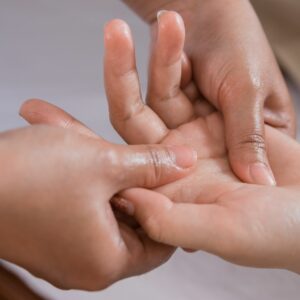Hand clumsiness can be a frustrating and concerning experience. It can interfere with daily activities, making writing, typing, and eating more difficult. Understanding the causes of hand clumsiness is the first step in addressing the problem effectively. H&D Physical Therapy offers hand therapy in New York City. This comprehensive article explores the various causes of hand clumsiness and how hand therapy can help manage and alleviate this condition.
Understanding Hand Clumsiness
Hand clumsiness refers to a lack of coordination and precision in the movements of the hands and fingers. This can manifest as difficulty gripping objects, frequent dropping of things, or a general sense of awkwardness when using the hands. Several underlying factors can contribute to hand clumsiness, ranging from neurological conditions to musculoskeletal issues.
Common Causes of Hand Clumsiness
Neurological Disorders
Neurological disorders are one of the primary causes of hand clumsiness. Conditions such as Parkinson's disease, multiple sclerosis (MS), and stroke can impair the nervous system, leading to a loss of fine motor skills. These disorders disrupt the communication between the brain and the muscles, causing difficulty in controlling hand movements.
- Parkinson's Disease: Characterized by tremors, stiffness, and bradykinesia (slowness of movement), Parkinson's disease can severely impact hand function.
- Multiple Sclerosis: MS is an autoimmune disorder that affects the central nervous system. It can cause weakness, numbness, and coordination problems in the hands.
- Stroke: A stroke can damage brain areas responsible for motor control, leading to hand weakness and clumsiness.
Peripheral Neuropathy
Peripheral neuropathy results from damage to the peripheral nerves, which connect the spinal cord to the rest of the body. This damage can cause symptoms such as tingling, numbness, and weakness in the hands, leading to clumsiness.
- Diabetes: Diabetic neuropathy is a common complication of diabetes, where high blood sugar levels damage the nerves, particularly in the extremities.
- Alcoholism: Chronic alcohol consumption can lead to nutritional deficiencies and nerve damage, contributing to hand clumsiness.
Musculoskeletal Issues
Musculoskeletal problems can also lead to hand clumsiness. Conditions such as arthritis, carpal tunnel syndrome, and tendonitis can affect the joints, tendons, and muscles, reducing the hand's ability to move smoothly and accurately.
- Arthritis: Osteoarthritis and rheumatoid arthritis can cause joint pain and stiffness, impairing hand function.
- Carpal Tunnel Syndrome occurs when the median nerve is compressed at the wrist, leading to numbness, tingling, and weakness in the hand.
- Tendonitis: Inflammation of the tendons, often due to repetitive strain or overuse, can result in pain and decreased dexterity in the hands.
Psychological Factors
Stress, anxiety, and depression can also contribute to hand clumsiness. These conditions can affect motor skills by causing muscle tension and reducing concentration and coordination.
Aging
As we age, our motor skills naturally decline. This can be due to a combination of factors, including reduced muscle mass, decreased nerve conduction, and joint stiffness. Aging can make fine motor tasks more challenging, leading to increased hand clumsiness.
Medication Side Effects
Certain medications can have side effects that impact hand coordination. For example, some antipsychotic and anticonvulsant drugs can cause tremors or weakness, affecting hand movements.
Hand Therapy for Clumsiness
Hand therapy can be an effective treatment for hand clumsiness, regardless of its underlying cause. Hand therapists use a combination of exercises, splinting, and ergonomic advice to help improve hand function and reduce clumsiness.
Exercise Programs
Specific exercises can strengthen the muscles of the hand and improve coordination. These exercises might include:
- Grip Strengthening: Using hand grippers or squeezing a stress ball can help build grip strength.
- Fine Motor Exercises: Activities like threading beads, buttoning buttons, and using therapy putty can enhance fine motor skills.
- Range of Motion Exercises: Stretching and moving the fingers and wrist can improve flexibility and reduce stiffness.
Splinting and Bracing
Splints and braces can support the hand and wrist, reducing strain and helping maintain proper alignment. This can be particularly useful for conditions like carpal tunnel syndrome and arthritis.
Ergonomic Modifications
Making changes to the way you perform tasks can help reduce hand clumsiness. Ergonomic modifications might include:
- Adaptive Tools: Using specially designed tools that are easier to grip and manipulate can make daily tasks more manageable.
- Workstation Adjustments: Adjusting the height of your desk and chair, using an ergonomic keyboard and mouse, and taking regular breaks can reduce strain on your hands.
Education and Training
Hand therapy in New York City often provides education and training to help individuals understand their condition and learn strategies to manage it. This might include advice on joint protection techniques, energy conservation strategies, and pain management.
When to Seek Professional Help - Hand Therapy in New York City
If you experience persistent hand clumsiness, it's important to seek professional help. Early intervention can prevent the condition from worsening and improve your quality of life. Consult with a healthcare provider if you notice any of the following:
- Sudden onset of hand clumsiness
- Hand clumsiness accompanied by other neurological symptoms, such as weakness, numbness, or tremors
- Difficulty performing daily tasks due to hand clumsiness
- Pain or discomfort in the hands that interferes with normal activities
Contact Us for Hand Therapy in New York City.
Hand clumsiness can have a significant impact on your daily life, but understanding the underlying causes and seeking appropriate treatment can make a big difference. Whether it's due to neurological disorders, musculoskeletal issues, or other factors, hand therapy offers a range of strategies to improve hand function and reduce clumsiness. By working with a hand therapist and incorporating exercises, ergonomic modifications, and education into your routine, you can regain control and dexterity in your hands.
You must be logged in to post a comment.